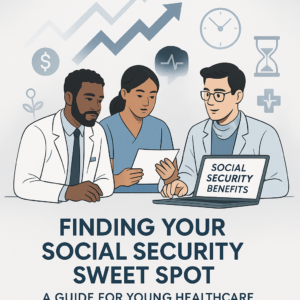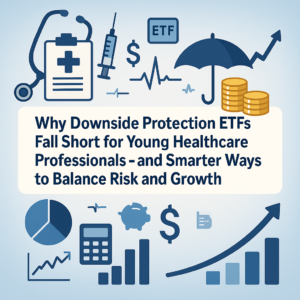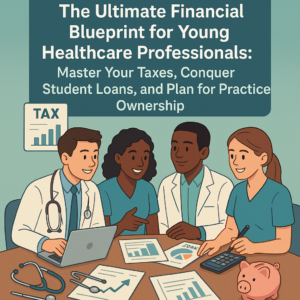Why Liquidity Matters: A Guide to Avoiding Illiquid Investment Traps for Healthcare Professionals
As a physician, dentist, or healthcare professional, you understand the importance of preparedness, whether it’s stocking the clinic with essential supplies or setting aside funds for emergencies. Yet when it comes to your investment portfolio, many overlook a critical factor: liquidity. In an era where alternative investments and private equity seem attractive, tying up capital for months—or even years—can jeopardize your financial flexibility. This comprehensive guide will show you how to assess liquidity in investments, avoid common pitfalls of illiquid assets, and build a resilient portfolio suited to a healthcare career.
Table of Contents
- Understanding Liquidity and Why It Matters
- Pitfalls of Illiquid Investments
- Case Studies: Lessons from Real Investors
- Evaluating Liquidity in Your Portfolio
- Strategies for Physicians and Dentists
- Tax Considerations and Harvesting Losses
- Ongoing Monitoring and Rebalancing
- Conclusion and Next Steps
1. Understanding Liquidity and Why It Matters
Liquidity refers to how quickly an asset can be converted into cash without significantly affecting its price. Highly liquid assets—such as publicly traded stocks and bonds—can be sold within days or even minutes. Illiquid assets, including private equity, fractional real estate, or collectible art, often require lengthy sale processes or special markets.
Key Points:
- Emergency Needs: Healthcare professionals may face sudden expenses, from malpractice premiums to practice upgrades.
- Tax Planning: Selling assets before year-end can help manage gains and losses for tax efficiency.
- Market Shifts: Liquidity allows you to adjust exposures when economic conditions change.
2. Pitfalls of Illiquid Investments
While private equity and alternative investments can offer higher returns, they carry unique risks:
- No Ready Market: Without a secondary market, you may struggle to exit at a fair price.
- Extended Lock-Up Periods: Commitments to venture capital or real estate deals can last 10–15 years.
- Valuation Uncertainty: Quarterly or annual appraisals may not reflect true market value.
- High Fees: Management and performance fees can erode returns even during lock-up periods.
3. Case Studies
Consider two scenarios that highlight the importance of liquidity:
Case Study A: The Art Collector
An entrepreneur invested in expensive artwork through fractional platforms. When a large tax bill came due, he discovered there was no active market for his shares. Forced to accept deep discounts, he realized the value of liquidity over speculative upside.
Case Study B: Private Equity Commitments
A dentist allocated a portion of his nest egg to a private equity fund promising 15% annualized returns. After three years, the fund’s valuations dropped, and distributions remained delayed. Unable to rebalance or pivot, he saw paper gains evaporate and struggled to harvest tax benefits until the next fund close.
4. Evaluating Liquidity in Your Portfolio
Before you commit capital, run a liquidity audit:
- List All Assets: Include cash, marketable securities, retirement accounts, private investments, real estate, and collectibles.
- Estimate Exit Times: Assign a timeline—from same day (cash) to decades (certain fund commitments).
- Assess Lock-Up Provisions: Read subscription agreements for private funds to understand redemption windows.
- Overlay Financial Goals: Match liquidity profiles to planned expenses—buying a practice, funding college, retirement transitions.
5. Strategies for Physicians and Dentists
To maintain flexibility while pursuing growth, consider these tactics:
- Diversify Across Liquidity Buckets: Allocate portions of your portfolio to ultra-liquid (cash, money markets), liquid (stocks, bonds), and less liquid (private equity, real estate) assets.
- Maintain an Emergency Reserve: Keep 6–12 months of cash or liquid equivalents accessible for unexpected expenses.
- Stagger Commitments: If investing in alternative assets, choose funds with different vintages or maturities to avoid simultaneous lock-up expirations.
- Partner with a Fiduciary Advisor: Work with a Registered Investment Advisor who understands your unique practice cash flows and can tailor a balanced portfolio.
6. Tax Considerations and Harvesting Losses
Illiquid assets can generate unrealized losses that might be used strategically:
- Tax-Loss Harvesting: Realizing losses on underperforming assets can offset gains elsewhere.
- Carryforward Benefits: Unused losses may be carried forward to future tax years.
- Consult a Tax Professional: Coordinate with your CPA or tax advisor to optimize timing and reporting.
7. Ongoing Monitoring and Rebalancing
A portfolio isn’t “set and forget.” Regular reviews ensure liquidity needs are met:
- Quarterly Check-Ins: Evaluate market conditions and any practice-related cash demands.
- Rebalance Schedule: Don’t let one asset class dominate—automate rebalancing if possible.
- Liquidity Drills: Simulate potential cash-out scenarios to test your readiness.
8. Conclusion and Next Steps
Liquidity is often the overlooked foundation of a resilient investment strategy. For healthcare professionals—whose careers involve unique income patterns and unexpected costs—ensuring access to cash without sacrificing growth is non-negotiable. By auditing your portfolio, diversifying across liquidity buckets, and partnering with a trusted fiduciary advisor, you can avoid the purgatory of illiquid investments and build a plan that supports your personal and professional goals.
Ready to optimize your portfolio’s liquidity and align your investments with your life as a physician or dentist? Contact MainStay Capital today for a complimentary discovery call.






